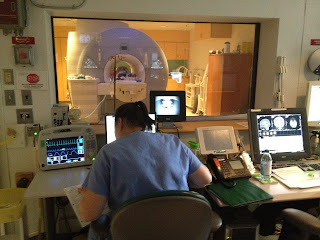Abdominal Aortic Aneurysm: An Overview

What is an Abdominal Aortic Aneurysm (AAA) ? The aorta is the largest artery in the body and runs from the heart down to your chest and abdomen. Over many years, the walls of the aorta may be weakened from the continuous pressure of blood flow, resulting in a bulge or swelling of the blood vessel known as an aortic aneurysm. The abdominal aortic aneurysm (also known as AAA, or ‘’triple A’’), is most commonly located just above your belly button Due to the fact that these aneurysms result from the weakening of the aorta’s walls over time, this condition is typically found in the older age groups, in particular, older men aged over 65 years old. It is recommended that men of reaching this age or with a family history of AAA or a history of smoking receive a screening for this condition, as these aneurysms will gradually enlarge as time passes and this will often occur without patients experiencing symptoms. An AAA is commonly f...



